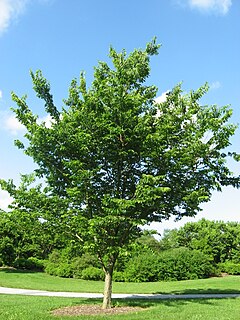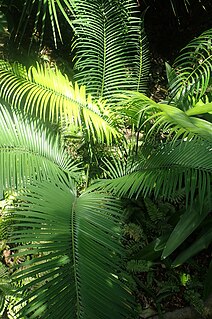
Celtis is a genus of about 60–70 species of deciduous trees, commonly known as hackberries or nettle trees, widespread in warm temperate regions of the Northern Hemisphere, in southern Europe, southern and eastern Asia, and southern and central North America, south to central Africa, and northern and central South America. The genus is present in the fossil record at least since the Miocene of Europe, and Paleocene of North America and eastern Asia.

Schinopsis balansae is a hardwood tree known as willow-leaf red quebracho which forms forests in the subtropical Gran Chaco ecoregion of north-eastern Argentina, and Paraguay. It is also found in the wild Pantanal vegetation in Brazil. Some of its vernacular names are quebracho colorado chaqueño and quebracho santafesino. Other species, like Schinopsis lorentzii, bear the general name quebracho and have similar properties and uses. S. balansae shares its habitat with a species of the same genus, S. heterophylla, and the two are often confused.

The American snout or common snout butterfly is a member of the subfamily Libytheinae in the brush-footed butterfly family, Nymphalidae. This species is found in both North and South America. The larval host plants are Celtis species on which the eggs are laid singly. Massive migrations of this species often attract attention in the Texas and Mexican newspapers.

Celtis occidentalis, commonly known as the common hackberry, is a large deciduous tree native to North America. It is also known as the nettletree, sugarberry, beaverwood, northern hackberry, and American hackberry. It is a moderately long-lived hardwood with a light-colored wood, yellowish gray to light brown with yellow streaks.

Celtis laevigata is a medium-sized tree native to North America. Common names include sugarberry, Southern hackberry, or in the southern U.S. sugar hackberry or just hackberry.

Cycas balansae is a species of cycad in the genus Cycas, native to southwestern China and adjacent northern Vietnam, where it occurs in dense mountain rainforests.
Dalbergia balansae also known as Dalbergia assamica is a species of legume in the family Fabaceae. It is found in China and Vietnam. It is threatened by habitat loss.

Dacrydium balansae is a species of conifer in the family Podocarpaceae. It is found only in New Caledonia.
Balanops balansae is a species of plant in the Balanopaceae family. It is endemic to New Caledonia.
Celtis hypoleuca is a species of plant in the family Cannabaceae. It is endemic to New Caledonia.

Celtis lindheimeri, also called Lindheimer's hackberry, is a species of tree in the family Cannabaceae. It is typically found in areas of central Texas and northeastern Mexico. It has a height averaging 9 meters, and produces a reddish-brown berry. It is a species closely related to netleaf hackberry which is common in western United States. The Spanish common name is "palo blanco", meaning "white tree", which is commonly used to identify this tree. It is named after its discoverer Ferdinand Lindheimer, a German-born botanical collector and Texas newspaper editor.
Celtis luzonica is a species of plant in the family Cannabaceae. It is endemic to the Philippines. It is threatened by habitat loss.

Oxera is a genus of flowering plants in the family Lamiaceae native to Vanuatu and New Caledonia in the western Pacific.

Planera is a genus of flowering plants with a single species, Planera aquatica, the planertree or water elm. Found in the southeastern United States, it is a small deciduous tree 10–15 m tall, closely related to the elms but with a softly, prickly nut 10–15 mm diameter, instead of a winged seed. It grows, as the name suggests, on wet sites. Despite its common English name, this species is not a true elm, although it is a close relative of the elms. It is also subject to Dutch elm disease, a disease which affects only members of the Ulmaceae. It is native to most of the southeast United States. It is hardy down to Zone 7.
Oxera balansae is a New Caledonian flowering plant in the mint family (Lamiaceae). It was first formally named in 1906. Little is known about its population size; it is known from scattered locations on Grande Terre, Pine Island, and Lifou. It is listed as an Endangered species on the IUCN Red List due to its limited distribution and habitat loss and degradation by agriculture, rusa deer, and uncontrolled fires.

Celtis iguanaea, commonly known as the iguana hackberry is a deciduous tree in the genus Celtis.
C. balansae may refer to:

Celtis philippensis, is an Asian species of flowering plant in the family Cannabaceae.

The Victoria Basin forest–grassland mosaic is an ecoregion that lies mostly in Uganda and extends into neighboring countries. The ecoregion is centered north and west of Lake Victoria, with an outlier on the border of Ethiopia and South Sudan.

Celtis biondii is a species of hackberry native to China, Taiwan, Korea, and Japan. It prefers to grow on limestone in the floristic assemblage that is thought to also include wild Ginkgo biloba. It is a deciduous tree growing 18 m (59 ft) tall.














